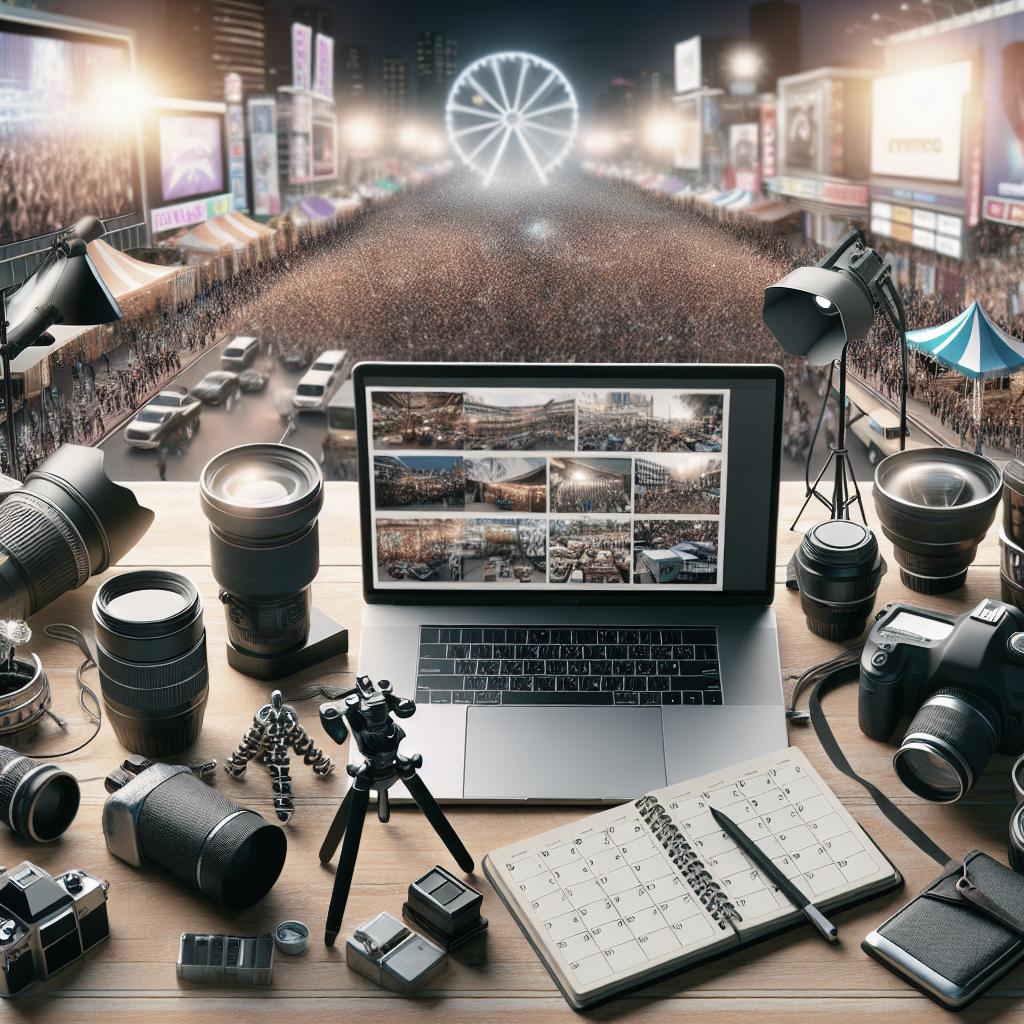Flowers make for beautiful subjects—ranging in vibrant colors, textures, and patterns—and they (generally) stay still. Discover how to shoot flowers in a way that’ll make your flower photography stand out from the rest. We’re here to show you how to dazzle. Flower photography is an amazing genre that allows you to capture the vibrant, intricate world of flowers in a way that tells a unique story through visuals. In this post, you’ll discover what flower photography entails, the different techniques you can employ to create stunning flower photos, and the essential gear that will aid in your quest for the perfect shot. Whether you’re a budding photographer or someone seeking to refine their skills, the tips herein will help you make your flower photography bloom—pun intended.
What Is Flower Photography?
Flower photography is a specialization within the broader field of macro photography, focusing on capturing the beauty, detail, and essence of flowers. This type of photography can range from wide-shot arrangements of flower gardens to highly detailed macro shots that display intricate petal patterns. The aim is to highlight the flower’s color, texture, and form in a way that emotes and evokes beauty. The process involves not just pointing and shooting but understanding your subject’s character and surroundings. Unlike traditional landscape or portrait photography, flower photography often delivers unexpected results due to differing environmental conditions, such as lighting and weather. The need for precision and patience makes this type of photography both challenging and highly rewarding.
How to Take Beautiful (and Unique) Flower Photography
1. Use a Backlight to Make Flowers Glow
Backlighting involves positioning your light source behind the flower, illuminating its petals, and highlighting the texture and color while creating a mesmerizing glow. This technique works exceptionally well during sunrise or sunset when natural light is soft and golden. Positioning your camera at an angle where the light filters through the petals can result in photographs that appear almost ethereal and otherworldly. Experiment with different levels of backlighting by adjusting your camera angle and the light’s intensity. Enhance this effect by using a reflector to fill any harsh shadows. This dual lighting approach will add depth and dimension to your photos, making the flowers pop with luminescence.
2. Switch Up Your Perspective
Don’t be afraid to get down and dirty. Sometimes, the most captivating angles are from a lower vantage point, making the flower seem much larger and more significant in the frame. This unique perspective can offer a fresh, original take on common flowers, rendering them in a way the eye doesn’t typically see. You can also try capturing flowers from directly above, creating a flat-lay style shot that emphasizes patterns and shapes. Changing your perspective not only adds variety to your shots but can also reveal aspects of the flowers that may go unnoticed when viewed from standard angles.
3. Take Striking Silhouettes
Silhouette photography focuses on capturing the dark outline of the flower against a brightly lit background, creating a beautifully contrasted image. To achieve this, shoot during early morning or late evening when the sun is low on the horizon, and place the flower between your camera and the light source. Adjust your camera settings for the background exposure, allowing the flower to turn into a dark shape. This method works particularly well with flowers that have distinctive shapes and forms, allowing their outlines to create recognizable and dramatic silhouettes.
4. Focus Through Flowers
Incorporate an artistic touch by shooting through a bunch of flowers to make your primary subject stand out. This technique involves placing the flower you wish to focus on in the foreground while having additional flowers in front, creating a natural frame around your subject. To master this, use a shallow depth of field to blur the foreground and background flowers, putting emphasis on your main subject. This results in a dreamy, focused flower image surrounded by a haze of colors and shapes, making for a visually intriguing photograph.
5. Add Dew Droplets to Bring Flowers to Life
Dewy flowers carry a fresh, rejuvenated appeal that can add an extra sparkle to your photographs. You can achieve this naturally by shooting early in the morning when actual dew settles on flowers, or mimic the effect using a spray bottle filled with water. Mist the flowers lightly to form droplets that catch and reflect light, adding an element of freshness and allure. Macro lenses work exceptionally well in this scenario, allowing you to capture the fine details of the dewdrops, enhancing the overall quality and beauty of your shots.
6. Use a Shallow Depth of Field
A shallow depth of field focuses on the flower, blurring the background, which isolates your subject and makes it pop. This technique is perfect for highlighting the intricate details of the flower while eliminating any distracting backgrounds, creating a clean, professional look. To achieve this, use a wide aperture (such as f/2.8 or f/4), bringing attention to the flower while rendering the background into a smooth blur. This effect pushes the viewer’s eyes directly to the subject, effectively capturing their attention and admiration.
7. Minimize Camera (and Flower) Shake
Stability is vital in flower photography, especially if you are working with close-up or macro shots. Camera shake can easily ruin a photo’s sharpness and detail. To combat this, use a tripod to keep your camera steady, ensuring crisp images. Wind can also cause flowers to sway, blurring the final image. To counter this, photograph flowers in sheltered environments or use barriers to block the wind. Alternatively, you can shoot during times of lower wind activity, like early morning or late evening.
8. Approach Flower Photography Like Portraiture
Think of your flower as a model. Just like in portrait photography, pay attention to lighting, pose (angle), and expression (details). Experiment with different lighting setups, softening harsh shadows with a diffuser, or creating dramatic lighting using spotlights or natural sunlight. Consider the “pose” by adjusting your camera angle to capture the flower in the most flattering way. Also, look for expressions in textures, petal arrangements, and colors that can convey emotions or stories, adding depth to your floral portrait.
Gear You’ll Need for Impressive Flower Photography
Camera
A good camera is the foundation for stunning flower photography. While DSLRs and mirrorless cameras are ideal for providing high-quality detail and versatility, even a high-end smartphone can produce impressive results with the right techniques. Pay attention to the camera’s macro capabilities, as being able to focus on minute details is crucial. When selecting a camera, look for one with manual mode functions, allowing you to control settings such as aperture, shutter speed, and ISO, which are instrumental in achieving the desired effect in your flower photos.
Lens
Your choice of lens significantly impacts the quality of your flower photography. Macro lenses are excellent for capturing close-up details, allowing you to focus on small, intricate aspects of the flower. A 50mm or 100mm macro lens can provide the depth and precision needed for this genre. For more versatility, consider lenses with a wide aperture, allowing for a shallow depth of field to blur backgrounds. Telephoto lenses can also give fascinating results by compressing background elements and isolating the subject, providing a variety of creative options.
Tripod
A tripod stabilizes your camera, reducing shake and ensuring sharp, clear images—essential for macro and close-up photography. Look for tripods that are sturdy yet portable, with adjustable heights that allow for low-angle shots closely aligned to the flower’s level. Additional features like flexible legs can enable you to set up in unique positions, contributing to more creative compositions. Pairing your tripod with a remote shutter release can further minimize the risk of camera shake, especially in challenging lighting conditions.
Lessons Learned
| Tip/Section | Details |
|---|---|
| Use a Backlight to Make Flowers Glow | Position light behind the flower to create a glowing effect. Use natural light for best results. |
| Switch Up Your Perspective | Try unique angles, such as low shots or flat-lay, to give a fresh viewpoint. |
| Take Striking Silhouettes | Capture the outline of flowers against a bright background for dramatic contrast. |
| Focus Through Flowers | Use other flowers in the foreground to frame your main subject beautifully. |
| Add Dew Droplets to Bring Flowers to Life | Use natural morning dew or a spray bottle to add sparkling water droplets. |
| Use a Shallow Depth of Field | Employ a wide aperture to focus on the flower and blur the background, highlighting details. |
| Minimize Camera (and Flower) Shake | Use a tripod and shoot during low-wind conditions to ensure sharp photos. |
| Approach Flower Photography Like Portraiture | Think of the flower as a model and adjust lighting, angles, and focus to capture its essence. |
| Camera | Choose one with good macro capabilities and manual settings for optimal control. |
| Lens | Macro lenses or any with a wide aperture or telephoto capabilities are ideal. |
| Tripod | Essential for stability, select one that is portable, adjustable, and sturdy. |


